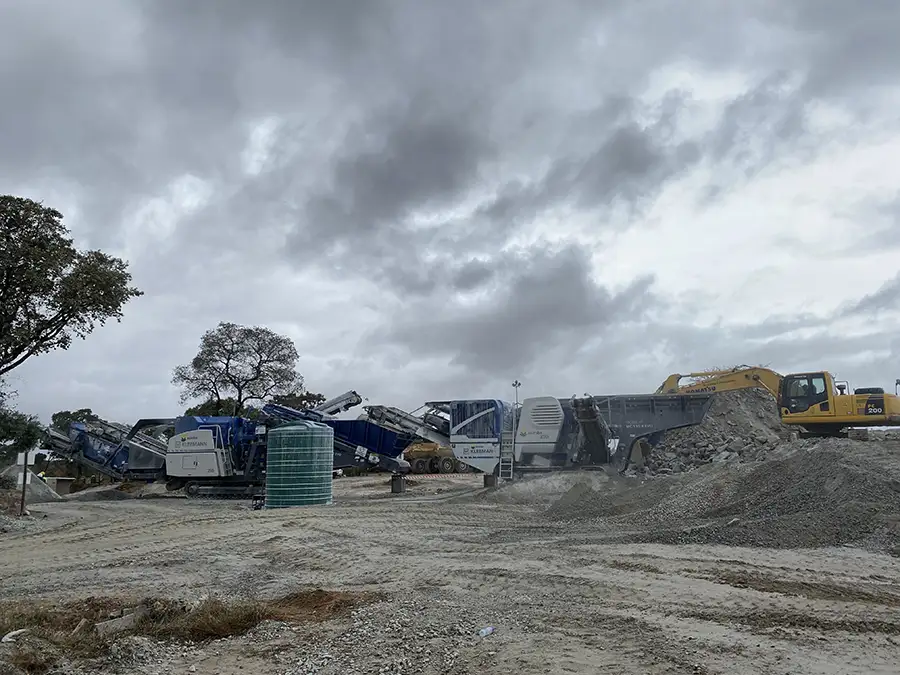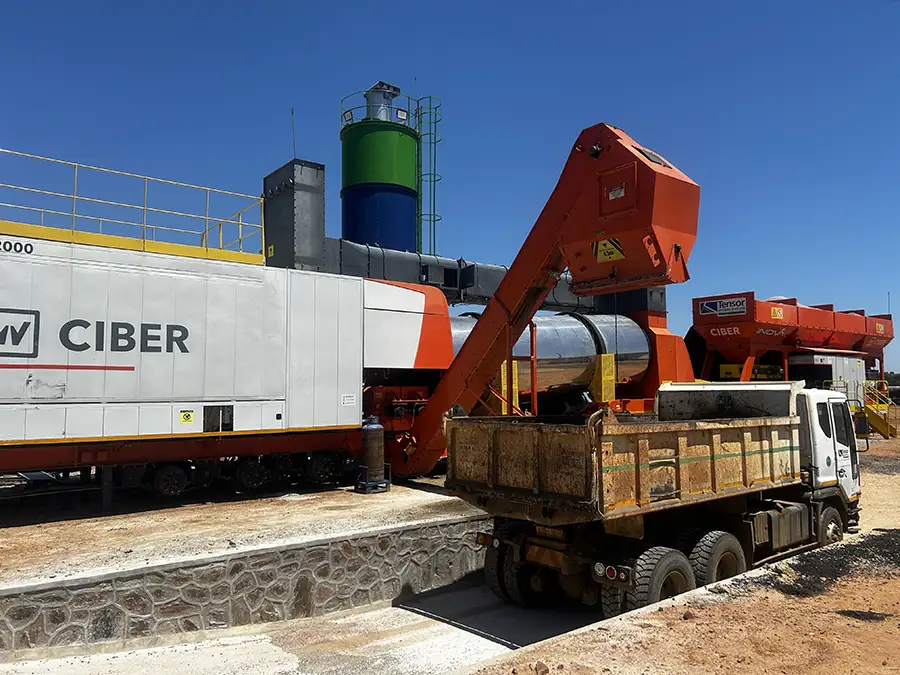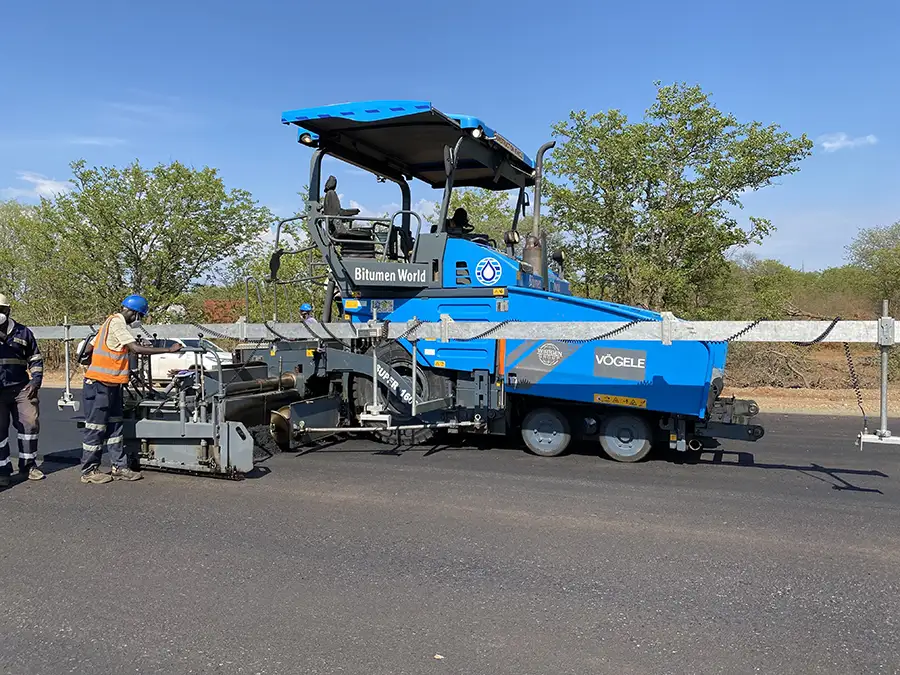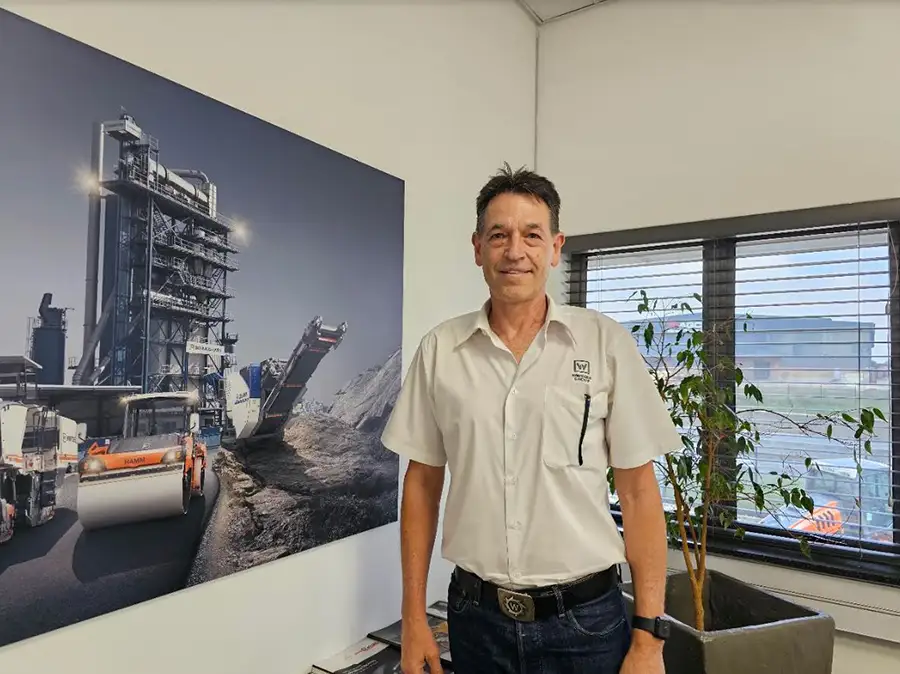That the South African economy has faced headwinds in the past decade is no overstatement. Chief among them has been the rolling scheduled power cuts (load-shedding), which started in 2007 and have intensified exponentially, reaching close to nine hours daily in 2022. This has had a devastating impact on several economic sectors.
The construction sector, reasons Schulenburg, has had its own fair share of obstacles. Principal among them has been the lack of spend by state-owned enterprises (SOEs), not necessarily because of the shortage of capital, but due to the lack of capacity to spend available budgets.
Positives
“Despite the apparent negative trajectory in the growth of the economy, I believe there are some positives to dwell on,” says Schulenburg. “As a major equipment and technology supplier to the construction industry, we have seen some double-digit growth of the market in the past two years in South Africa, although from a very low base.”
To provide context, the South African road construction equipment market – including product groups such as recyclers, milling machines, pavers and rollers, amongst others – has contracted from about 630 units in 2013 to 330 in 2023. However, Schulenburg says despite the drastic decline during that period, the market has seen some progress over the last two years, recording a 17,8% growth between 2021 and 2022 and a 21,6% increase between 2022 and 2023. Despite the consecutive double-digit growth, the market is only half of its 2013 sales volumes.
Another positive to highlight, says Schulenburg, is the recent Infrastructure Fund, which he believes is likely to boost the much-needed infrastructure investment in South Africa. Announced by South African President Cyril Ramaphosa in 2018, the aim of the Infrastructure Fund is to transform public infrastructure through bespoke blended financing solutions, using means such as sourcing and blending capital from the private sector, institutional investors, development finance institutions and multilateral development banks.
In addition, Schulenburg says the pension fund, which by law is now allowed to invest in infrastructure, is sitting on the cusp of an infrastructure boom that provides an excellent opportunity for diversifying portfolios and supporting the development of critical infrastructure for the country.
The growth in popularity of public private partnerships (PPPs) – not so much in road construction but in other areas such as renewable energy – is encouraging and holds the key to more investment into public sector projects and more effective public resources management.
On the project rollout front, Schulenburg commends the South African National Roads Agency Limited (SANRAL) for its usually well designed and executed projects. The roads authority has announced a R28-billion injection into the construction industry for the first half of the 2024. The announcement comes after SANRAL closed 77 tenders worth R6,43-billion in December 2023. This, he says, is encouraging and will keep the construction industry ticking in 2024.

Regional growth
While South Africa still exhibits pockets of opportunity in the face of economic obstacles, Schulenburg says it is countries bordering South Africa that have chipped in with significant growth during the past two years, particularly Zimbabwe, as well as Botswana and Namibia.
While Botswana has in recent years turned its infrastructure development attention to water and pipelines, Schulenburg says its focus is seemingly turning back to roads and bridges. Despite it being a small market, Namibia has also shown signs of growth on the construction front.
In Zimbabwe, construction activity has been a major growth driver for Wirtgen Group SA. The Zimbabwean government has embarked on massive reconstruction and rehabilitation projects on major road networks to enhance both domestic and regional connectivity.
Of note is the nearly 600-km Harare-Masvingo-Beit Bridge highway, which is now almost complete with many parts of the road open to traffic. Part of the North South Corridor, which begins in Durban, South Africa, passing through Zimbabwe and ending in Lubumbashi, the DRC, the project is divided into three sections: the 580-km Harare-Masvingo-Beit Bridge highway with its eight toll plazas, the 342-km Harare-Chirundu highway, and the 59-km Harare Ring Road with three toll plazas.
Meanwhile, the Mbudzi Interchange Project is said to be halfway complete. For years, the old Mbudzi roundabout has been a major traffic hold-up in Harare, which is why government committed US$88-million to turn it into an interchange. Elsewhere, work on the Beitbridge-Bulawayo-Victoria Falls Highway, another strategic trade route in the regional North South Corridor, has commenced, marking another significant construction project in the country.
“Leveraging the exceptional support of our capable dealer, Machinery Exchange, Zimbabwe has been an outstanding market for us,” says Schulenburg. “On the back of government’s massive investment in road infrastructure projects in recent years, we have had major successes in marketing our products.”
Commenting on some major milestones, Schulenburg tells Quarrying Africa that the company has sold about seven Wirtgen recyclers, nine Vögele pavers and about 30 HAMM rollers in Zimbabwe alone in the past two years. Wirtgen Group SA has also recently delivered its first ever Ciber mobile asphalt plant in Zimbabwe. Known as the iNOVA 2000 model, it has been successfully commissioned and already has produced numerous tonnes of asphalt for major road projects.
“We have also been successful with our Kleemann range of crushers and screens, which have been deployed on borrow pits that supply main road works in the country. In fact, we have delivered two trains – each comprising an MC 110 EVO2 jaw crusher, an MCO 9 EVO2 cone crusher and an MSC 703 EVO screen. We also have two more Kleemann trains on order, which are scheduled for delivery in 2024,” he says.

Trends
Commenting on some emerging trends in these markets, Schulenburg notes a growing appetite for new technologies in Zimbabwe and Botswana. This is in direct contrast with South Africa, where there is a general belief that technology takes away jobs from workers. Consequently, he says, the market continues to “fight its way into older technology”, which is less productive.
“Zimbabwean and Botswanan contractors are much more open to new technology, mainly because they fully understand that using machinery does not inhibit job creation. A machine does things efficiently and at a perfect quality level. These contractors are now reaping the benefits of increased productivity and ultimately lower costs of projects,” he says.
Apart from technology adoption, Wirtgen Group SA has adopted a new approach in the past two years, which has seen the company investing heavily in stock. This is aimed at shortening lead times for contractors, especially given the challenges associated with global supply chains and the delays at South African ports. In addition, the company has strengthened its used equipment offering to ensure it has a comprehensive offering for all customer profiles, especially cash-strapped start-up construction contractors.

Outlook
Looking ahead, Schulenburg sees a positive outlook for the business in 2024, with a substantial R750-million worth of deals in the pipeline. He is encouraged by the Kleemann range of mobile crushers and screens, which is gaining traction after a slow start in the market.
“We have initially struggled to gain traction with the Kleemann brand. It is always difficult to introduce a new product, especially in a market where there are already some established brands. We are doing quite well with Kleemann in Zimbabwe and Botswana. In addition to the orders of two trains in Zimbabwe, we have another train on order in Botswana,” he says.
In fact, he adds, significant future growth for Wirtgen Group SA will come from the Kleemann brand, with big opportunities from both the aggregates and mining markets. The Kleemann range distinguishes itself with a range of capabilities. Firstly, says Schulenburg, it is a sturdy machine – the stability of the chassis results in better crushing performance, and this has been proven on many reference sites where the machines have been deployed.
“Another key competitive edge of the Kleemann offering is its lower fuel consumption, largely driven by new technology engines combined with on-board generators that drive most components. This is particularly important for customers in our region where fuel prices are prohibitive. A Kleemann train on average achieves anything between 20% and 30% better fuel consumption than most of our competition. It is even much more efficient with the diesel-electric option,” says Schulenburg.
To close a crucial gap in its Kleemann offering, Wirtgen Group SA will introduce a smaller impact crusher during the first half of this year – the MR 100 NEO. The new machine will be suited for smaller crushing operations such as brickyards and recycling applications.





